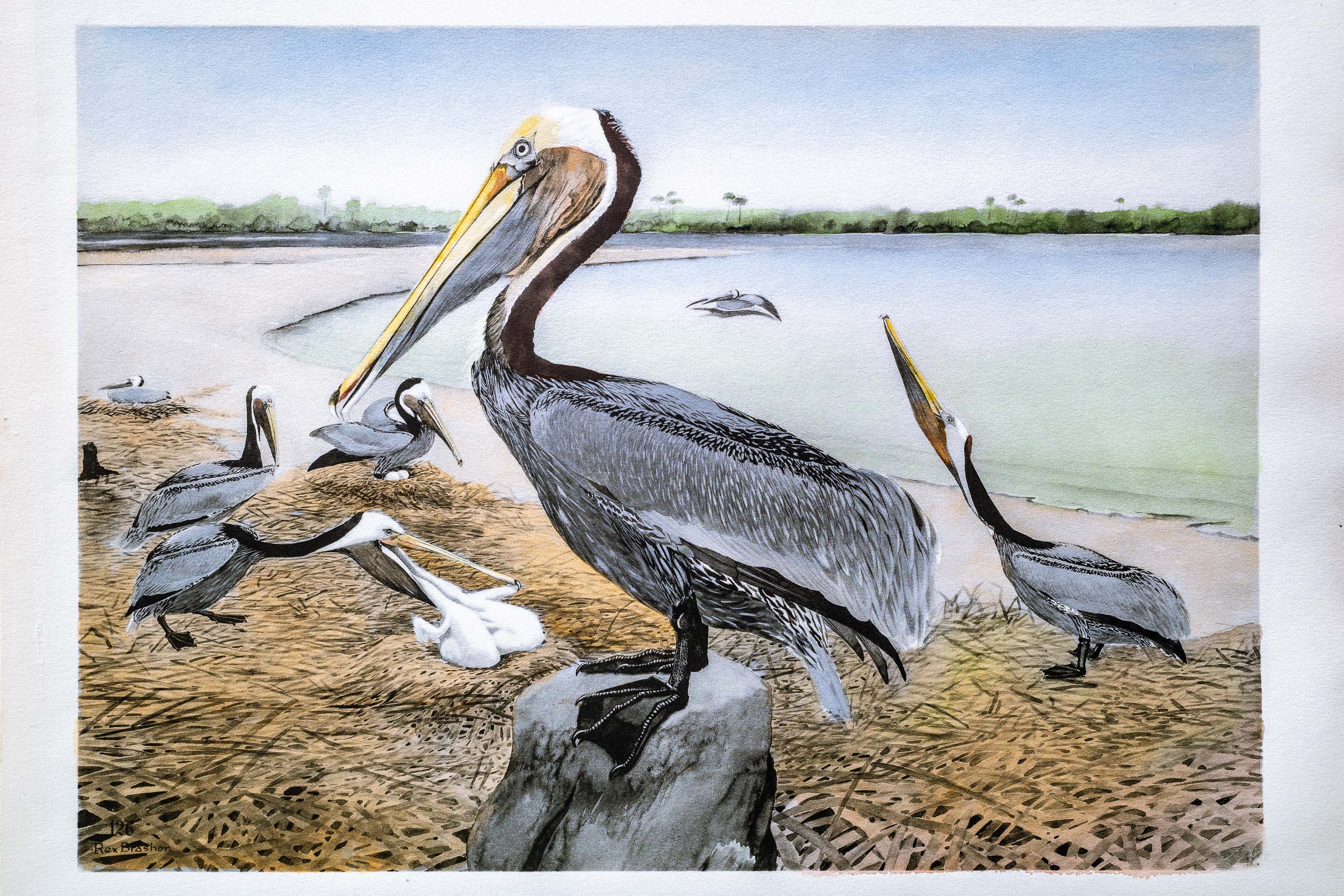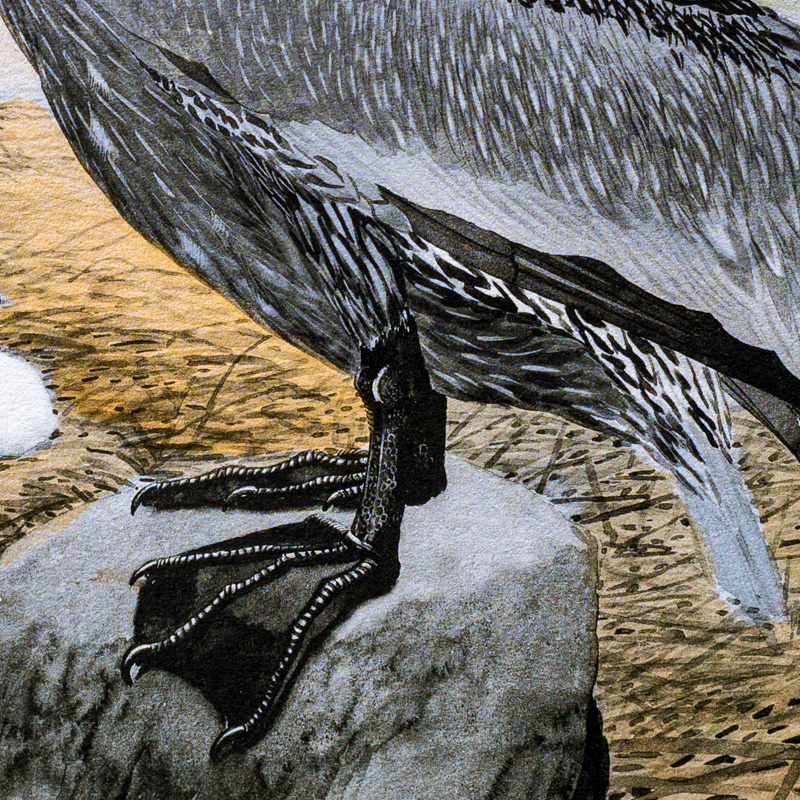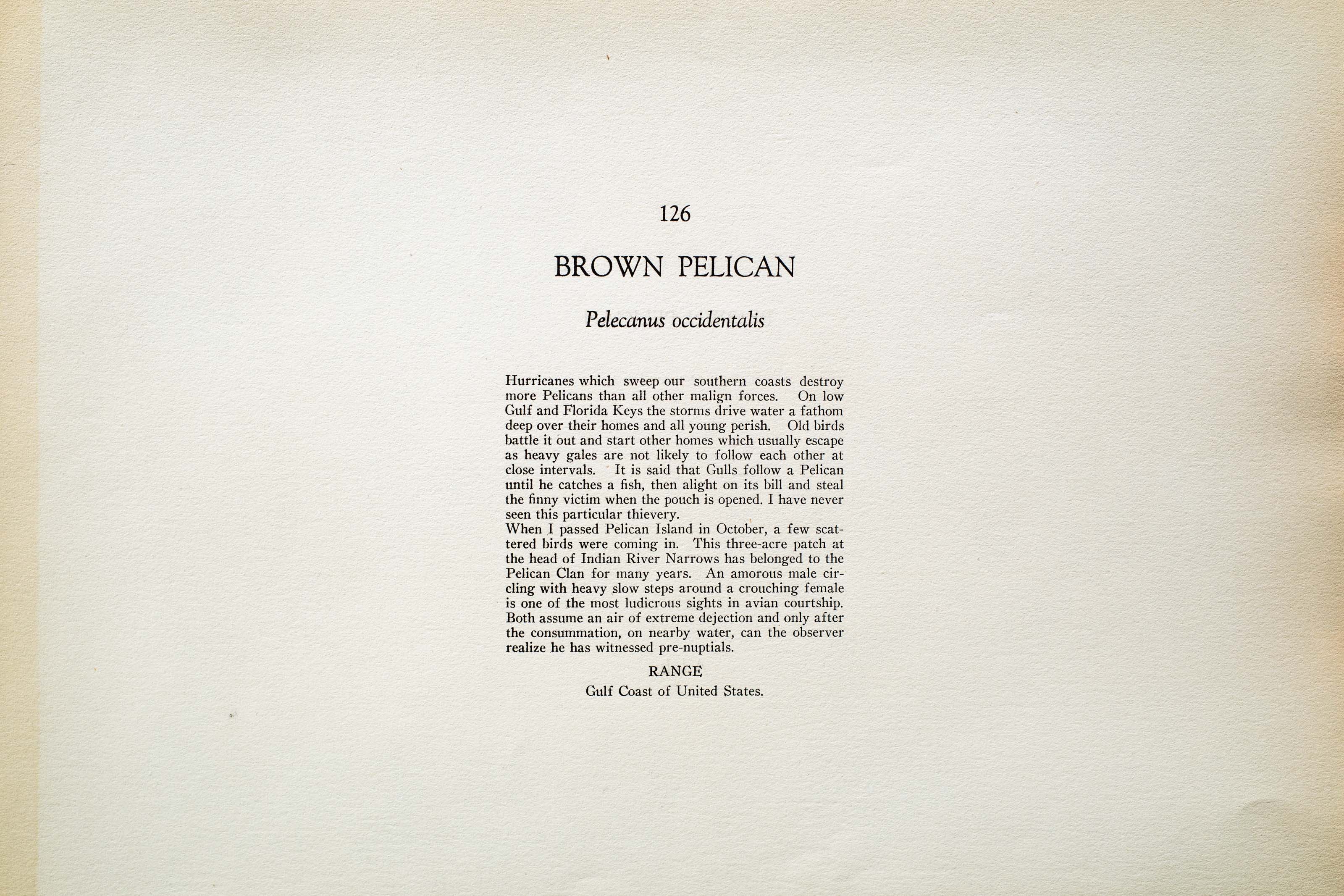






Unknown
1932
2
126
A team of dedicated board members, volunteers, and student interns has published every page in Volume 9. This volume includes 360 images of paintings and lyrical descriptions of birds, now available online for everyone to enjoy anywhere in the world. This is a monumental task. Each volume requires approximately 400 hours to photograph, edit, transcribe, catalog, and publish online. We need your support to complete this work.
If you're tech-savvy, have a good eye, are meticulous with details, and love structured data, please consider volunteering by emailing us at hello@rexbrasher.org.
We encourage all bird lovers and supporters to consider a monetary donation to support our mission to make Rex's work available for everyone. You can provide a one-time or recurring donation online.
Hurricanes which sweep our southern coasts destroy more Pelicans than all other malign forces. On low Gulf and Florida Keys the storms drive water a fathom deep over their homes and all young perish. Old birds battle it out and start other homes which usually escape as heavy gales are not likely to follow each other at close intervals. It is said that Gulls follow a Pelican until he catches a fish, then alight on its bill and steal the finny victim when the pouch is opened. I have never seen this particular thievery.
When I passed Pelican Island in October, a few scattered birds were coming in. This three-acre patch at the head of Indian River Narrows has belonged to the Pelican Clan for many years. An amorous male circling with heavy slow steps around a crouching female is one of the most ludicrous sights in avian courtship. Both assume an air of extreme dejection and only after the consummation, on nearby water, can the observer realize he has witnessed pre-nuptials.
Gulf Coast of United States.